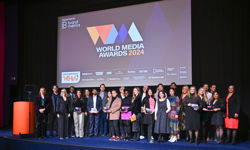If one wanted to put a positive spin on the disruption caused to the digital media industry by the rise of ad blockers, it could be said that disruption is good, in that it challenges the established norms, encourages creativity and change, and that any market needs to evolve and become more progressive to stay relevant and interesting to its customers, or it will ultimately disappear.
So, how is the brave new world of the ad blocking era panning out? Right now, there are two sides - those fighting against it head on, and those, no doubt also fighting against it, but also developing a more creative approach to advertising.
See you in court
In Germany, we’ve already seen publishers losing the fight to stem ad blockers in the courts but continuing to pursue that tack. It does feel a little like King Canute trying to control the tide, or a little more recently, taxi drivers blockading roads in protest against Uber, and if you want an example of standing still in the face of adversity, just look at what happened to all those publishers who, back in the late nineties and early noughties, thought the internet was a distraction and committed themselves to their existing media, particularly print.
So, is it the demise of digital display advertising as we know it? Possibly. Is it the start of a new wave of much richer experience in commercial communications with consumers? Undoubtedly. It’s a mobile world, and with consumers interacting with media increasingly through smartphones and tablets, the old conventions of push advertising are becoming, not just less relevant, but arguably more intrusive and irritating, which is counter to the consumer relationship with those devices, particularly smartphones, which is built on proximity, intimacy and personal ownership.
Ad blocking has forced a collision between two worlds, that of publishing reality and that of consumer expectation. Obviously an ad funded business model enables quality content to be created – consumers haven’t always understood this, but at the same time they appear generally loathe to pay directly for that access. The education programme of “you can’t have your cake and eat it” is fine, but reality suggests that consumers will find alternatives from the plethora of sources that exist digitally when faced with a barrier like that. In special interest verticals, there is more chance of acceptance but the broader the focus (eg news and entertainment), the more opportunities there are for substitution.
So it’s a tough one, and no one wants to take the blame for where we are, the brands who want to pursue the tried and trusted path of display ads, the creatives churning out ads that in aiming to achieve maximum attention have become increasingly intrusive, or the publishers, who have created ad heavy pages and sites to maximise revenue opportunities.
The trade body view
How are some of the key industry bodies approaching it?
Richard Reeves, managing director of the AOP, says: “No one knows their audiences better than the publishers themselves, and no one is better placed than the publisher to inform and educate this industry as to how best to deliver a brand’s message as part of a digital experience that the consumer desires.”
“AOP is fully committed to its support and contribution to discussions that are ‘consumer first’ in their application, its desire being to both facilitate and influence cross-industry discussions with all and any parties that are aligned and willing to work collegiately.”
“The approach is not to devise a strategy to block ad blockers, it is about identifying how the industry best harnesses this disruptive technology, currently regarded as unsophisticated and indiscriminate, to refine its function in order to become a positive contributor to the online media ecosystem and consumer journey.”
Mark Challinor, president of the International News Media Association (INMA) uses a very interesting analogy to describe the current scenario: “The Vegas magicians Penn & Teller got their careers launched on the back of exposing illusions that the magic fraternity had been doing for years. Uproar. However, their argument was that all they were doing was raising the bar and replacing old stuff with newer, better mind-bending magic that was appreciated more these days. As such, they were partly responsible for giving a degree of “cool” back to a dying art.”
“In publishing, it’s the same. We can’t keep doing the same things and expecting acceptance especially in a new digital age where the environment changes constantly. People today are looking for a better experience. Millennials are growing up with a bar raised much higher than their parents in terms of what they can expect from the world around them… including advertisers, agencies and publishers. We’re all in this together. How do we tackle these exponential times we now live in?”
“There is a need for everyone in the chain to enhance messaging and provide better quality creative that’s engaging and valued. Speaking for the newspaper industry, as well as looking inwardly at what we create ourselves, I think advertisers also need to produce more engaging, quality creative that is interesting for the consumer. If they don’t, they may find it will be publishers blocking ads too as the relationship with their readers has never been so important and they can’t (and won’t) just throw it all away now.”
“If we all want consumers to see and value our ads, we need to show some respect for what they require from us and give them better ads, that are relevant, creative, interesting, not intrusive and, in essence, a better experience.”
The enlightened view is that we are all in it together. Everyone is agreed that the user experience and consumer focus should be at the heart of all solutions. The united view is that the agenda should not be driven by tech vendors seeking to gain at the expense of publishers and ultimately consumers.
Extortion?
Ad blockers are frequently said to be pursuing an extortion model, effectively holding the industry to ransom based on their view of what “acceptable” advertising is. That just can’t be right can it? Even if a publisher is “lucky” enough to be included automatically on the white list of Ad Block Plus, at whose expense is that being determined? Even harder to stomach is the issue of those who have paid to join the white list and effectively bypass the blockers. A nice business model if you’re in the business of blocking, but hardly in the consumer interest, if they have chosen to avoid advertising but are now having it served to them regardless – how can that constitute “acceptable” advertising?
Constantine Kamaras, chairman of the Interactive Advertising Bureau (IAB) Europe says: “The broader problem is, in many ways, that in some cases, digital advertising has not put at the forefront the fundamental truth that the user experience is paramount. And no advertising that does not respect the user experience, be it in terms of content, in terms of design and creative, or in terms of device functionality is going to work. It’s bad advertising.”
Recent IAB and YouGov research shows 18% of UK adults use ad blockers but amongst 18-24 year olds, it’s as high as 35%. Creating fewer ads that are less invasive looks the preferred solution – 48% of ad-blocker users said they would be less likely to use ad-blockers if ads did not interfere with what they were doing and 36% if there were fewer ads on a page. Only 14% said they would be less likely to block ads if they were more relevant.
Publishers, including the Guardian, are pursuing customised ad experiences, using the data they have on audiences to provide a richer advertising experience but that relies on data, its accuracy and has a challenge of scalability. Consumers share more information about themselves every day, consistently tell us that they want greater relevance in their lives, and they consistently interact with it when they get it, including via advertising.
Need for reinvention
Engagement and attention sit at the heart of solving the advertising dilemma. Brands and publishers need to reinvent the value exchange. The exchange should consider the benefits of reading and watching advertising content and how to reward people for their engagement. So, all of the data in the digital world needs to be informing digital advertising content. The results should be obvious and will benefit all parties: consumers learn of new, relevant products and services while remaining able to enjoy their favorite web content for free, and advertisers get the engagement they need to generate serious business value.
The opportunity would appear to be good for native advertising that seamlessly complements the editorial against which it’s placed. Consumers engage with ad content when it conveys a message that speaks directly to them, good content in the form of native engages users on a personal level, speaks directly to their interests and tells an interesting story. However, even native is not totally immune to the threat of ad blocking and can find elements including logos and terms blocked as they are recognisable as “advertising”.
In the short term, digital display advertising will not disappear. The death of the banner has been talked about for years now, yet it still constitutes a significant share of advertising revenue, and whilst the threat to it now is ultimately more pronounced, there will remain a place for it.
The positive is that ads or ad led content are going to get more creative, more relevant, less intrusive and ultimately more engaging. However, we also need to sort out the issue of delivery, re-targeting especially, to resolve the other side of the conflict. It’s not just what you’re seeing, it’s where and how often, that has consumers looking for attempts to avoid it!












